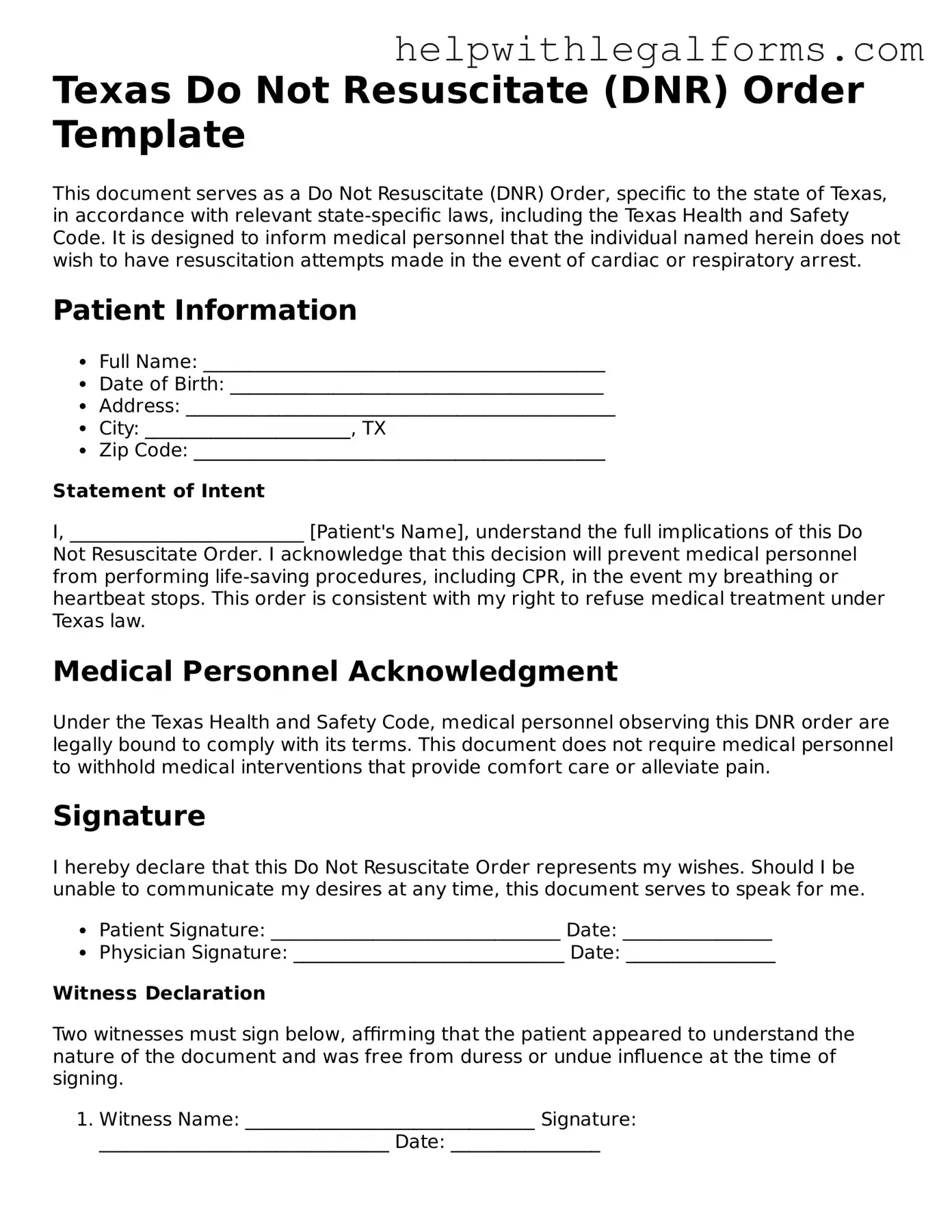What is a Do Not Resuscitate Order (DNR) in Texas?
A Do Not Resuscitate Order (DNR) in Texas is a legal document that tells health care providers not to perform CPR (cardiopulmonary resuscitation) if a person's heart stops beating or if they stop breathing. It's for people who, due to their health condition, want to avoid aggressive life-saving techniques.
How can someone get a DNR order in Texas?
Getting a DNR order in Texas involves consulting with a healthcare provider. The discussion should include the patient's medical condition, the likely outcome of CPR, and the patient's wishes. If a DNR order aligns with the patient's care preferences, the healthcare provider will prepare the necessary paperwork, which must be signed by both the provider and the patient or the patient's legally authorized representative.
Who can consent to a DNR order on behalf of a patient?
If a patient is unable to make their own healthcare decisions, an authorized legal representative, such as a medical power of attorney, legally appointed guardian, or close family member in the absence of the aforementioned, can consent to a DNR order on behalf of the patient.
Where is a DNR order valid?
A DNR order in Texas is valid in any healthcare setting, including hospitals, nursing homes, and in the patient's home. It is also recognized by emergency medical services (EMS), meaning if EMS is called, they will adhere to the order's instructions.
Can a DNR order be revoked or changed?
Yes, a DNR order can be revoked or changed at any time by the patient if they are competent to make their own healthcare decisions, or by the patient's authorized legal representative. To revoke a DNR, it's important to inform all healthcare providers involved in the patient's care and, if applicable, remove the DNR bracelet, if one has been issued.
Is a DNR order the same as a living will?
No, a DNR order is not the same as a living will. A DNR specifically addresses the use of CPR in emergency situations. A living will, on the other hand, is a broader document that outlines a person's wishes regarding various life-prolonging medical treatments in the event they become unable to communicate their decisions due to illness or incapacity.
